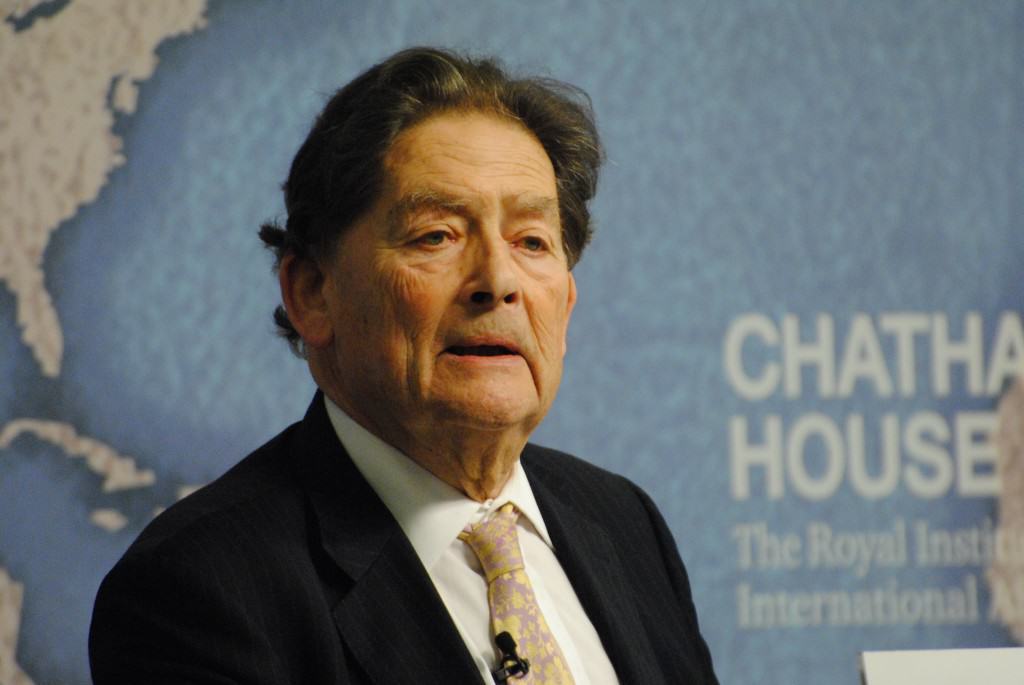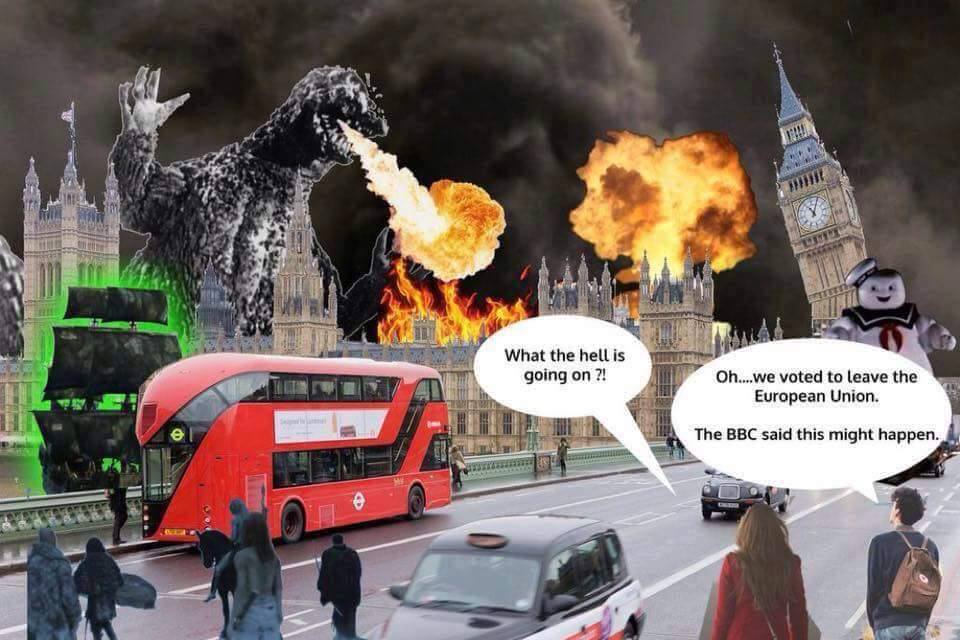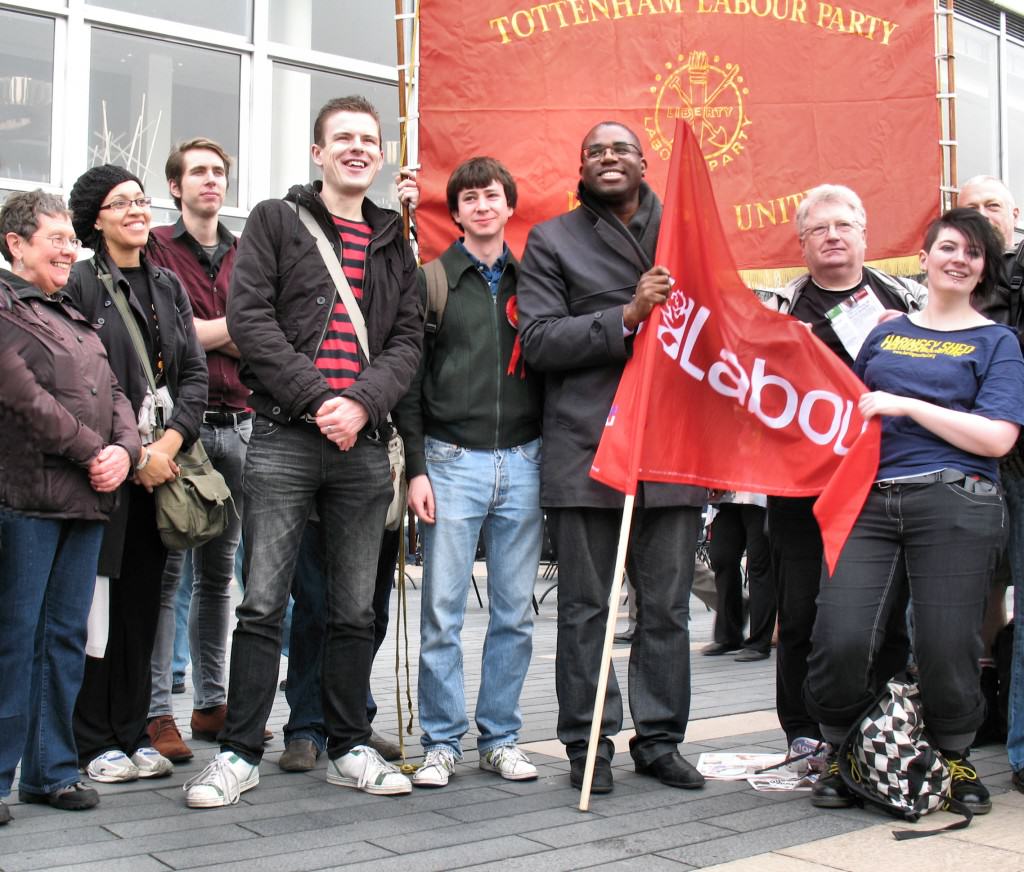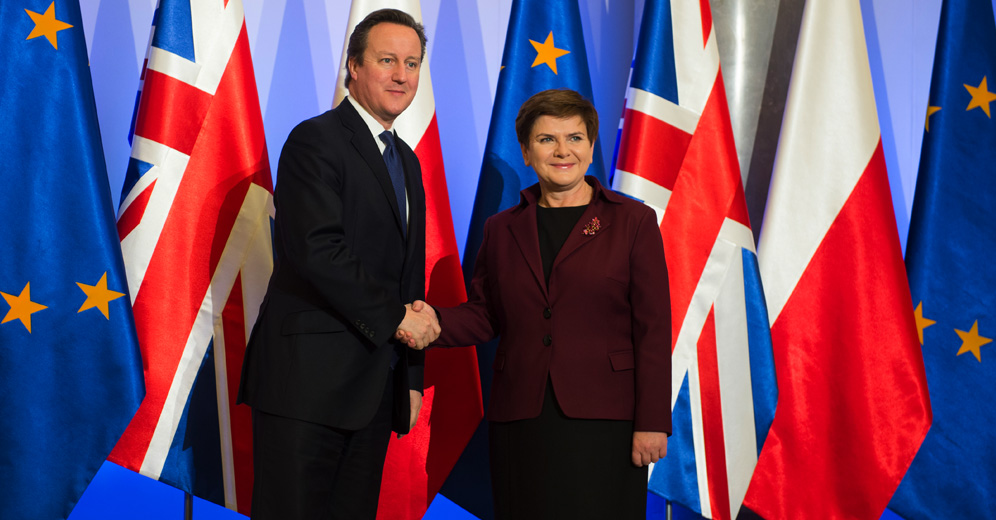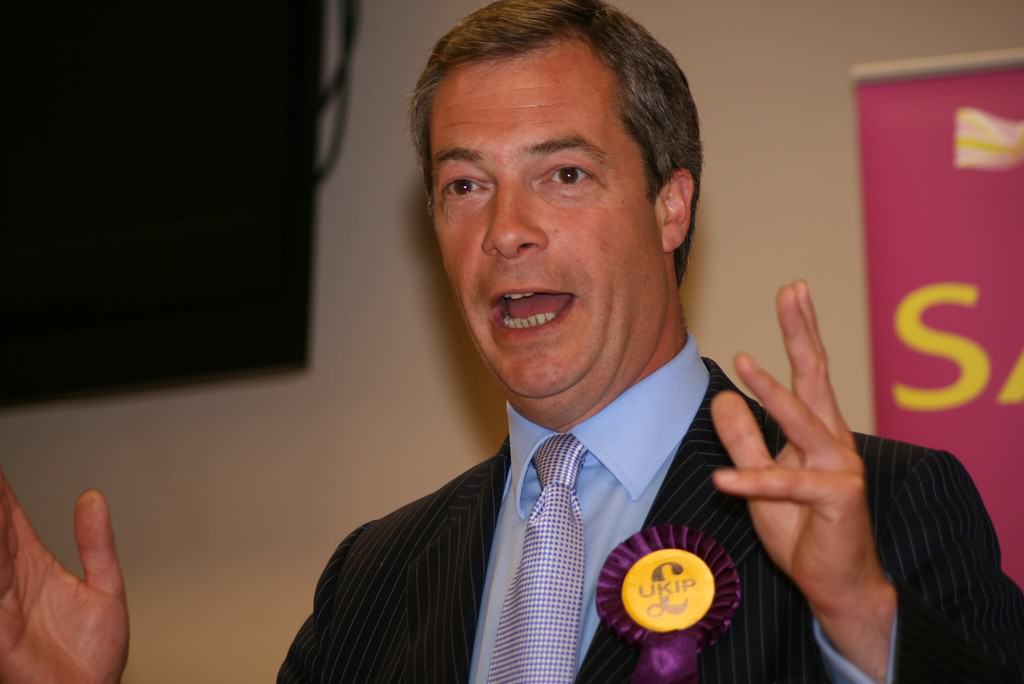Follow the Brexit Opinion Polls here at Electomatic. Opinion polling for the upcoming referendum on STAY / LEAVE for the UK in The EU. The campaigns have only just started with most of the political scene, the business community and the media supporting a STAY vote with most of UKIP lead by Nigel Farage and a fraction of the Conservative Party led by mayor of London Boris Johnson as its figurehead.
2016 – 28.April Update – New Brexit Opinion Polls – Remain Leads
A new batch of brexit opinion polls for the upcoming referendum on UK membership of the EU still show an overall lead for the Remain campaign. Generally Leave does better in online polls whilst Remain shines in more traditional telephone interview polls. Which type is better is a matter of methology however in general the firms using telephone interview data tend to have a better track record.
| Date | Remain | Leave | Undecided | Sample | Conducted by | Polling Type | Notes |
|---|---|---|---|---|---|---|---|
| 25–26 Apr | 41% | 42% | 13% | 1,650 | YouGov | Online Poll | remainder “won’t vote” |
| 25–26 Apr | 45% | 38% | 17% | 1,003 | Survation | Telephone Poll | |
| 22–24 Apr | 44% | 46% | 10% | 2,001 | ICM | Online poll | |
| 20–24 Apr | 51% | 43% | 6% | 800 | ORB | Telephone Poll |
2016 – 26.April Update – EU Referendum Polling: Huge Remain Lead
For the first time in a while we are seeing statistically significant swings. They are all going in the direction of the UK staying in the EU. Post the Pro-EU leaflet and the Obama interference in the referendum it seems Remain has finally pulled ahead as they were favored to do. The race is far from over but at this stage the Leave campaign needs a game changer to even make referendum-night a nail biter.
| 16–19 Apr | 51% | 40% | 9% | 1,002 | ComRes | Telephone Poll | |
| 16–18 Apr | 49% | 39% | 8% | 1,026 | Ipsos MORI | Telephone Poll |
2016 – 16.April Update – Brexit ? Too Close To Call
3 new polls out. One showing a 1% lead for remain, two showing an exactly tied race for the EU referendum in the UK. All 3 polls are performed before the designation of Vote Leave as official Out campaign but after the turmoil following the pro EU leaflets and the Panama Papers.
| 12-14 Apr | 40% | 39% | 16% | 3,371 | YouGov | Online Poll | remainder “won’t vote” |
| 11–12 Apr | 39% | 39% | 17% | 1,693 | YouGov | Online Poll | remainder “won’t vote” |
| 7–11 Apr | 35% | 35% | 30% | 1,198 | TNS | Online Poll |
2016 – 12.April Update – New UK Referendum Poll shows 42-45%
ICM has a new poll out showing a 3% lead for the out campaign. This is a significant 4% swing from Remain to Leave since the last poll by ICM. In between the two polls have been the revelations on prime minister David Camerons links to tax avoidance in the Panama Papers leak, the Pro-Remain leaflet debate following taxpayer money being spent on the Remain campaign outside the budgets for each side.
It is worth noting that if these hot topics of the day have caused the swing towards Leave, we often see a reversal of the trend when the debate dies down.
| Date conducted | Remain | Leave | Undecided | Sample | Conducted by | |
|---|---|---|---|---|---|---|
| 8–10 April | 42% | 45% | 13% | 2,030 | ICM |
2016 – 7.April Update: 2 New Brexit Opinion Polls – Marginal Remain Leads
2 new polls have been released. Both showing a 1% lead for the Remain campaign. The movements and leads are too small to be statistically significant.
The polls come among fierce debates about the UK Government spending 9million pounds on leaflets delivered to all households in the country arguing for Remain. It is controversial given both campaigns are limited to 7m in spending, which is being subverted by the government using public funds to more than double the Remain campaign budget – without allowing for inclusion of the Leave counter arguments. The debate and the actual leaflet is not reflected in these polls though, look out for polls conducted after April 6 to start seeing any effects.
| Date | Remain | Leave | Undecided | Sample | By | Type | ||
|---|---|---|---|---|---|---|---|---|
| 29 Mar–4 Apr | 39% | 38% | 18% | 3,754 | YouGov | Online Poll | ||
| 1 Apr–3 Apr | 44% | 43% | 13% | 2,007 | ICM | Online Poll |
2016 – 6.April Update – New EU Referendum Poll: 7% Remain Lead
ORB has released a new poll showing a significant 7% lead for the Remain campaign. In fact the Remain sides support is unchanged at 51% since the last ORB brexit poll, but the Leave side has lost steam and dropped from 49% to 44%.
The poll comes amidst the developing refugee crisis with the EU trying to send back refugees to Turkey and the Panama Papers leak implicating several world leaders, among others the UK primeminister David Camerons dad, in tax avoidance schemes. It is far from certain that such stories have any effect on the stay/leave vote. But if they were to have an effect this and previous polls were conducted too early to catch any reaction.
| Date(s) conducted | Remain | Leave | Undecided | Sample | Conducted by | Polling Type | Notes |
|---|---|---|---|---|---|---|---|
| 29 Mar–3 Apr | 51% | 44% | 5% | 800 | ORB | Telephone Poll |
2016 – 2.April Update – New Brexit Polling Data: 4% Leave Lead
Opinium has joined the ranks of Brexit opinion pollsters with a fresh survery showing a 4% lead for Leave. As in other polls the Leave campaign finds its strongest support among middle-aged and older voters, whilst Remain has a firm lead among youngsters.
| Date(s) conducted | Remain | Leave | Undecided | Sample | Conducted by | Polling Type | |
|---|---|---|---|---|---|---|---|
| 29 Mar–1 Apr | 39% | 43% | 18% | 1,966 | Opinium | Online Poll |
2016 – 2.April Update – New EU Referendum Poll shows 51-49%
ORB has released a new poll showing a 2% lead for the remain campaign. It represents a 4% swing from leave to remain since their previous poll of the Brexit campaign. It is worth noting that ORB has eliminated the undecided / wouldnt vote from the poll, thus not being directly comparable to polls allowing for this outcome.
| Date conducted | Remain | Leave | Undecided | Sample | Conducted by | |
|---|---|---|---|---|---|---|
| 24–28 Mar | 51% | 49% | 0% | 2,002 | ORB |
2016 – 31.March Update – New Brexit Opinion Polls – Very Tight Race
2 new brexit opinion polls have been published after the holidays. TNS debuts on the scene with a poll showing a tied race. The most notable thing about the TNS referendum polling is the finding of 30% undecided voters, well above the norm.
BMG shows a 4% lead for the LEAVE campaign, which is a significant swing towards leave since their previous poll that showed a 44-41 advantage for Remain. However, BMG has not yet released the specifics of the poll. In particular we need to know if the new poll includes Northern Ireland as the last one did. If the new one does not that could account for the swing as Northern Ireland voters have so far indicated favoring Remain heavily.
| Date conducted | Remain | Leave | Undecided | Sample | Conducted by | |
|---|---|---|---|---|---|---|
| 24–29 Mar | 35% | 35% | 30% | 1,193 | TNS | |
| 24–29 Mar | 41% | 45% | 14% | 1,518 | BMG Research |
In the notes for the 41-45 BMG EU referendum poll they note that the remain campaign may have further problems as they are primarily backed by a younger vote notorious for not actually turning out. Again we do not have their specifics yet so it can not be judged.
2016 – 25.March Update – New Brexit Opinion Poll: Small Leave Lead
A fresh poll from ICM is out. Basically the balance is unchanged. A continued 2% lead for the Leave campaign of 45-43 with 12% undecided. The only change from the previous ICM referendum polling data is fewer undecideds but those who have decided in between have broken evenly.
| Date conducted | Remain | Leave | Undecided | Sample | Conducted by | |
|---|---|---|---|---|---|---|
| 22–24 Mar | 45% | 43% | 12% | 1,970 | ICM |
2016 – 23.March Update – New ICM and Comres Brexit Polls
Two new UK Brexit polls to report today. Comres has found a 7% lead for the remain campaign whereas ICM reports a 2% lead for the Leave campaign. That might sound like complete nonsense. Combined they tell us exactly nothing you might think, but in fact the devil is in the detail.
The difference between these two polls is hidden in the sample they have chosen (who they have asked) and how they have weighted the results. The 2 companies simply have different ideas about exactly how the sample should be composed. In such a case the interesting thing isnt the specific number, both campaigns can read the one they prefer and celebrate. The rest of us should look at the trend.
In this case Comres had it at 51-39 a month ago making the seemingly good result for the Remain campaign in the UK an actual 5% swing towards Leave during the past month. If we compare to ICM they find about the same. In the preivous Brexit opinion poll from ICM they showed 43-41. In other words they have a 4% swing from remain to leave (the timeframe is not exactly the same but they both show a noticeable swing towards Leave)
| Date conducted | Remain | Leave | Undecided | Sample | Conducted by | |
|---|---|---|---|---|---|---|
| 18–20 Mar | 48% | 41% | 11% | 1,002 | ComRes | |
| 18–20 Mar | 41% | 43% | 17% | TBC | ICM |
2016 – 18.March Update – ICM Finds Positive Swing For Remain Campaign
Including the previous ICM poll from a week to illustrate the small but noticeable swing from a 1% Leave lead to a 2% Remain lead. This is on the far edge of statistic significance as swings go, we will need more data to see if the remain campaign is pulling ahead. The latest ICM poll also has slightly fewer undecided voters. Again we need more data but if we start seeing the undecided voters breaking for a Remain vote, it spells serious trouble for the Leave campaign
If we include the latest ORB poll from the same period showing a tiny 2% Leave lead and weigh them up against eachother we land on a more or less exactly tied race at this point. Is the UK headed for a Brexit ? The polling data gives us few answers at this stage.
| Date conducted | Remain | Leave | Undecided | Sample | Conducted by | Notes |
|---|---|---|---|---|---|---|
| 11–14 Mar | 47% | 49% | 4% | 823 | ORB | |
| 11–13 Mar | 43% | 41% | 16% | 2,031 | ICM | |
| 4–6 Mar | 40% | 41% | 19% | 2,051 | ICM |
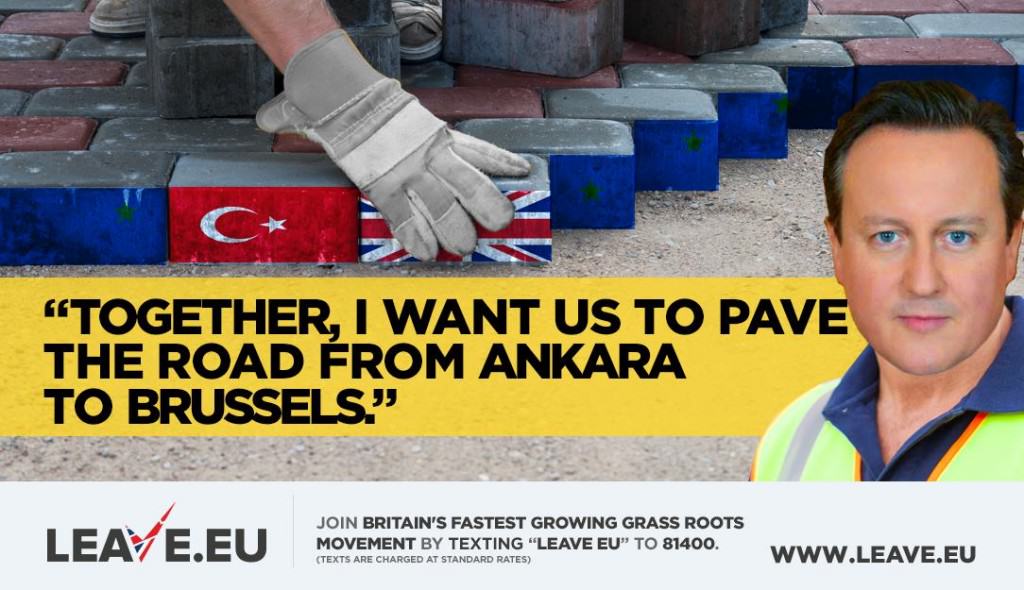
Brexit Opinion Polls – Anti EU Satire – see more brexit satire in our political meme tracker
2016 – 16.March Update – New ORB Polling for UK Referendum on EU
A new ORB polling piece shows a narrow lead for the LEAVE campaign. The media has published this poll as a triumph for the LEAVE campagin, however in fact this is a slightly smaller lead than in the previous ORB poll which showed a 48%-52% divide. Statistically insignificant movements but no basis for wild celebrations in the LEAVE camp.
| Date(s) conducted | Remain | Leave | Undecided | Sample | Conducted by | Notes |
|---|---|---|---|---|---|---|
| 11–14 Mar | 45% | 52% | 3% | NA | ORB | Likely Voters |
| 11–14 Mar | 47% | 49% | 4% | 823 | ORB |
In the more interesting sub-data of the poll it is worth noting a very small number of undecided voters. It may be due to polling methodology. They might push harder for an indication than other pollsters, or people may indeed have started making up their minds.
Also, ORB has weighted a “likely voter” screen as you can see in the attached PDF with all the polling data. The spread among likely voters shows a 7% lead for LEAVE campaign, which starts being quite significant. The question with Likely Voters of course always is, if the polling company gets their estimation of who will vote right. If they do not, the weighting might in fact be entirely fictional.
However, if we are indeed seeing a much wider lead for the LEAVE campaign among those likely to vote than in the general population it could be the much debated gap in enthusiasm. Whilst supporters of Brexit are wholeheartedly campaigning, stumping and rallying. The STAY campaign has so far attempted a few scaremongering tactics without mustering much excitement. However, that is a gap that it is fully possible to make up before referendum day in the UK – if the STAY campaign gets in gear.
For a lighter touch on the referendum debate, have a peak at our Political Meme Tracker. Of course the british are featured with plenty of political satire pieces there.
2016 – 10.March Update – New ICM Brexit Opinion Polling
The battle for the hearts and minds of voters in the UK is getting in gear. The referendum on the UKs future in the EU is still basically a dead heat with around a fifth of the voters undecided.
The latest Brexit Opinion poll from ICM shows a 40-41 lead for the LEAVE campaign. It reflects a small move towards the leave vote, however, statistically the movement and difference between the two sides is too small to be significant.
| Date(s) conducted | Remain | Leave | Undecided | Sample | Conducted by | Notes |
|---|---|---|---|---|---|---|
| 4–6 Mar | 40% | 41% | 19% | 2,051 | ICM |
2016 – 6.March Update – UK Referendum Poll on EU from Yougov
A new poll from YouGov shows a small lead for the remain campaign headed by primeminister David Cameron. The 3% lead for the UK staying in the EU is a small swing towards the Remain vote after a few Yougov polls recently showing small leads for the LEAD campaign.
| Date(s) conducted | Remain | Leave | Undecided | Sample | Conducted by | Notes |
|---|---|---|---|---|---|---|
| 2-3 March | 40% | 37% | 18% | NA | Yougov |
The slight shift from LEAVE to REMAIN is too small to attribute to any particular events or trends. However the campaigns do seem to be escalating. The REMAIN campaign has brought about threats from France to dump Calais refugees on English shores. The CEO of BBC has been suspended for stating his support for the UK leaving the EU, a suspension condemned by Boris Johnson among many others.
2016 – 3.March Update – Stay/Leave Poll from ICM
A new poll is out from ICM for the Brexit EU Referendum in the United Kingdom. Both sides command support from 41% with 18% being undecided. This is a small move towards the LEAVE side with the previous ICM poll from 12-14 february showing a 43%-39% lead for the STAY campaign.
Plenty of turmoil, debate and controversy has characterized the last few days in the STAY/LEAVE referendum campaigns. Primeminister David Cameron has been accused of unfair play and scaremongering after denying LEAVE-supporting cabinet members access to government information and ressources, demanding to vet the speeches of foreign leaders to ensure they do not hurt the STAY-campaign and making claims that prices in the UK will go up in case of a LEAVE vote. Such tactics did work in securing David Cameron a win in the Scottish referendum. Question is if it will work in the STAY / LEAVE EU Referendum – so far the brexit exit polls give no clear answer.
| Date(s) conducted | Remain | Leave | Undecided | Sample | Conducted by | Notes |
|---|---|---|---|---|---|---|
| 29 Feb | 41% | 41% | 18% | 2,003 | ICM |
2016 – 28.February Update – Stay/Leave Poll from ORB
A new brexit poll is out conducted 24-24 february from ORB. It is worth noting that ORB has consistently had the LEAVE vote ahead by around this margin consistently. As such, they may have a house effect tilting towards a LEAVE vote – or of course they may be right.
| Date(s) conducted | Remain | Leave | Undecided | Sample | Conducted by | Notes |
|---|---|---|---|---|---|---|
| 24–25 Feb | 48% | 52% | N/A | 2,014 | ORB |
Eitheir way, this long before voting day it is worth noting that the referendum opinion polls should not be taken as predictive. They can not tell us how the many of the undecideds break for LEAVE/STAY, they can not predict events and campaigns changing peoples minds – and as such they do not predict the result. They simply show how the race is going right now and can be used to see trends over time by comparing changes from poll to poll.
2016
| Date(s) conducted | Remain | Leave | Undecided | Sample | Conducted by | Notes | ||
|---|---|---|---|---|---|---|---|---|
| 21–23 Feb | 37% | 38% | 25% | 3,482 | YouGov | |||
| 17–23 Feb | 44% | 41% | 15% | 1,517 | BMG Research | Includes Northern Ireland | ||
| 20 Feb | David Cameron announces the date of UK’s In/Out EU referendum after an EU summit in Brussels. | |||||||
| 19–22 Feb | 51% | 39% | 10% | 1,000 | ComRes | |||
| 13–20 Feb | 48% | 33% | 19% | 1,003 | Survation | |||
| 13–16 Feb | 54% | 36% | 10% | 497 | Ipsos MORI | |||
| 11–15 Feb | 36% | 39% | 25% | 1,079 | TNS | |||
| 12–14 Feb | 43% | 39% | 18% | 2,001 | ICM | |||
| 11–14 Feb | 49% | 41% | 10% | 1,105 | ComRes | |||
| 5–7 Feb | 41% | 42% | 17% | 2,018 | ICM | |||
| 3–4 Feb | 36% | 45% | 19% | 1,675 | YouGov/The Times | |||
| 29–31 Jan | 42% | 39% | 19% | 2,002 | ICM | |||
| 27–28 Jan | 38% | 42% | 20% | 1,735 | YouGov | |||
| 23–25 Jan | 55% | 36% | 9% | 513 | Ipsos MORI | |||
| 21–25 Jan | 44% | 42% | 14% | 1,511 | BMG Research | Includes Northern Ireland | ||
| 22–24 Jan | 54% | 36% | 10% | 1,006 | ComRes | |||
| 22–24 Jan | 41% | 41% | 18% | 2,010 | ICM | |||
| 15–17 Jan | 42% | 40% | 17% | 2,023 | ICM | |||
| 15–16 Jan | 38% | 42% | 20% | 1,017 | Survation | Includes Northern Ireland | ||
| 8–14 Jan | 42% | 45% | 12% | 2,087 | Panelbase | |||
| 8–11 Jan | 44% | 38% | 18% | 2,055 | ICM | |||
2015
| Date(s) conducted | Remain | Leave | Undecided | Sample | Conducted by | Notes | ||
|---|---|---|---|---|---|---|---|---|
| 17–18 Dec | 41% | 42% | 17% | 1,598 | YouGov | |||
| 12–14 Dec | 58% | 32% | 10% | 529 | Ipsos MORI | |||
| 11–13 Dec | 56% | 35% | 8% | 1,001 | ComRes | |||
| 11–13 Dec | 42% | 41% | 17% | 2,053 | ICM | |||
| 4–6 Dec | 43% | 39% | 17% | 2,022 | ICM | |||
| 2–3 Dec | 36% | 43% | 21% | 1,001 | ORB | |||
| 30 Nov–3 Dec | 40% | 42% | 18% | 10,015 | Survation | Includes Northern Ireland | ||
| 20–24 Nov | 41% | 41% | 18% | 4,317 | YouGov | |||
| 19–24 Nov | 40% | 38% | 22% | 1,699 | YouGov | |||
| 20–22 Nov | 45% | 38% | 17% | 2,002 | ICM | |||
| 17–19 Nov | 48% | 52% | N/A | 2,067 | ORB | |||
| 16–17 Nov | 43% | 40% | 18% | 1,546 | Survation | Includes Northern Ireland | ||
| 11–17 Nov | 39% | 39% | 22% | 1,528 | BMG Research | Includes Northern Ireland | ||
| 13–15 Nov | 43% | 38% | 19% | 2,000 | ICM | |||
| 9–11 Nov | 39% | 43% | 19% | 2,007 | Survation | Includes Northern Ireland | ||
| 6–8 Nov | 46% | 38% | 16% | 2,024 | ICM | |||
| 30 Oct–1 Nov | 44% | 38% | 18% | 2,060 | ICM | |||
| 28–29 Oct | 39% | 41% | 19% | 1,664 | YouGov | |||
| 22–27 Oct | 40% | 40% | 20% | 1,738 | YouGov | |||
| 23–25 Oct | 45% | 38% | 17% | 2,049 | ICM | |||
| 23–25 Oct | 53% | 47% | N/A | 2,015 | ORB | |||
| 22–23 Oct | 42% | 39% | 16% | 1,625 | YouGov | |||
| 19–20 Oct | 42% | 40% | 17% | 1,690 | YouGov | |||
| 17–19 Oct | 52% | 36% | 12% | 498 | Ipsos MORI | |||
| 14–19 Oct | 42% | 39% | 19% | 2,372 | GQRR | |||
| 16–18 Oct | 44% | 38% | 18% | 2,023 | ICM | |||
| 7 Oct | 44% | 39% | 17% | 1,947 | ICM | |||
| 25–28 Sep | 55% | 36% | 8% | 1,009 | ComRes | |||
| 25–27 Sep | 45% | 38% | 17% | 2,005 | ICM | |||
| 17–22 Sep | 38% | 41% | 21% | 2,781 | YouGov | |||
| 10–17 Sep | 38% | 40% | 22% | 11,171 | YouGov | |||
| 11–13 Sep | 43% | 40% | 17% | 2,006 | ICM | |||
| 12 Sep | Jeremy Corbyn is elected leader of the Labour Party | |||||||
| 3–4 Sep | 40% | 43% | 17% | 1,004 | Survation | |||
| 18–19 Aug | 44% | 37% | 20% | 1,676 | YouGov | |||
| 13–17 Aug | 50% | 40% | 10% | 3,402 | YouGov | |||
| 23–29 Jul | 45% | 37% | 19% | 1,708 | YouGov | |||
| 16 Jul | Tim Farron is elected leader of the Liberal Democrats | |||||||
| 29 Jun–6 Jul | 45% | 37% | 18% | 5,008 | Survation | Includes Northern Ireland | ||
| 19–24 Jun | 44% | 38% | 18% | 1,653 | YouGov | |||
| 19–21 Jun | 55% | 45% | N/A | 2,000 | ORB | |||
| 14–16 Jun | 66% | 22% | 12% | 501 | Ipsos MORI | |||
| 8–11 Jun | 43% | 36% | 21% | 2,381 | YouGov | |||
| 1–2 Jun | 44% | 34% | 21% | 1,063 | YouGov | |||
| 27 May–2 Jun | 42% | 35% | 22% | 2,956 | YouGov | |||
| 29–31 May | 58% | 31% | 11% | 500 | ComRes | |||
| 28–31 May | 47% | 33% | 20% | 680 | ICM | |||
| 21–22 May | 44% | 36% | 20% | 1,532 | YouGov | |||
| 8–15 May | 47% | 40% | 13% | 3,977 | Survation | |||
| 7 Apr–13 May | 55% | 36% | 9% | 999 | Pew Research Center | |||
| 8–9 May | 45% | 36% | 19% | 1,302 | YouGov | |||
| 8–9 May | 45% | 38% | 18% | 1,027 | Survation | |||
| 7 May | United Kingdom general election, 2015 | |||||||
| 3–5 May | 56% | 34% | 10% | 1,011 | ComRes | |||
| 3–4 May | 45% | 33% | 21% | 1,664 | YouGov | |||
| 28–29 Apr | 52% | 32% | 16% | 1,823 | YouGov | |||
| 23–28 Apr | 47% | 33% | 20% | 1,834 | YouGov | |||
| 19–20 Apr | 45% | 35% | 20% | 2,078 | YouGov | |||
| 10–12 Apr | 40% | 39% | 21% | 2,036 | Populus | |||
| 8–9 Apr | 45% | 41% | 15% | 1,750 | Opinium | |||
| 26–30 Mar | 35% | 34% | 31% | 1,197 | TNS-BMRB | |||
| 24–26 Mar | 49% | 44% | 7% | 1,007 | Panelbase | Includes Northern Ireland | ||
| 18–25 Mar | 41% | 38% | 21% | 2,006 | YouGov | |||
| 22–23 Mar | 46% | 36% | 18% | 1,641 | YouGov | |||
| 18–23 Mar | 42% | 34% | 23% | 8,271 | YouGov | |||
| 23–24 Feb | 45% | 37% | 18% | 1,520 | YouGov | |||
| 22–23 Feb | 45% | 35% | 20% | 1,772 | YouGov | |||
| 17–20 Feb | 41% | 44% | 15% | 1,975 | Opinium | |||
| 25–26 Jan | 43% | 37% | 20% | 1,656 | YouGov | |||
| 18–19 Jan | 43% | 38% | 18% | 1,747 | YouGov | |||
| 15–19 Jan | 38% | 34% | 28% | 1,188 | TNS-BMRB | |||
| 6–8 Jan | 37% | 40% | 23% | 1,201 | TNS-BMRB | |||
More on the BREXIT Referendum:
Brexit ? Cameron Fails in Bruxelles
Game Changer ? Boris Johnson Campaigns For Brexit
The tables below show polling on whether the UK should be in or out of the EU. It does not ask the question in the context of a proposed prior renegotiation. Polling generally weights the sample to be nationally representative, weights by likelihood to vote and excludes “don’t know” responses. Polls are usually conducted within Great Britain and its surrounding islands, with Northern Ireland normally omitted from the sample. This has historically been the case in UK opinion polling because Northern Ireland has a different set of political parties from the rest of the UK, reflecting the constitutional divide between unions and nationalism or republicanism.
Brexit Opinion Polls
Remember that each opinion poll for the upcoming UK referendum is a picture of the voters opinion on the date they were asked. It does NOT predict what happens from now till the election, people changing their minds, undecideds making up their mind or anything else. Further, each poll has a margin of error. So if you see a 2% lead for the LEAVE campaign, it is simply too close to meaningfully say they are certainly ahead.
All that said, we can follow the trends in support for each side. Does Boris Johnson joining the LEAVE campaign boost it ? Will David Cameron be succesful in selling his Bruxelles deal as “the best of both worlds” or will it keep getting painted as a next to nothing result ? Follow the Brexit Opinion Polls here at Electomatic. But either way. The coming weeks and month will show.
Things to watch for:
- Scare Tactics. “Job will leave”. “The economy will collapse”. “Foreigners will come by millions”. Both sides will use them. Do not fall for them.
- Boris Johnson. How active will he be in the leave campaign? Does he go all in. Or was it just a signal.
- Nigel Farage. Can he charm the electorate as in EU-parliament elections?
- Undecideds. Is the number going down in polls?
- 50%. Any side consistently breaking the barrier?
